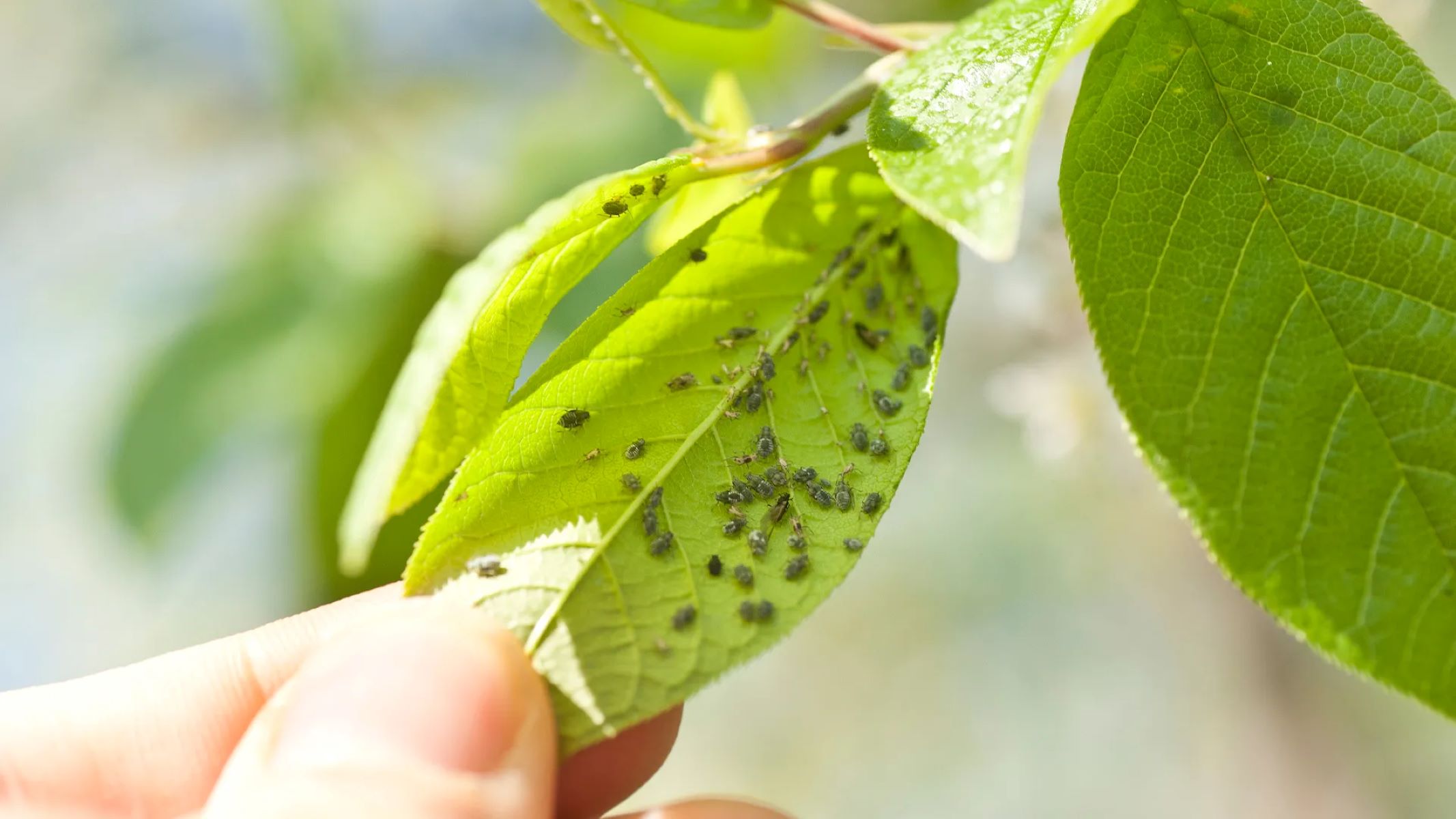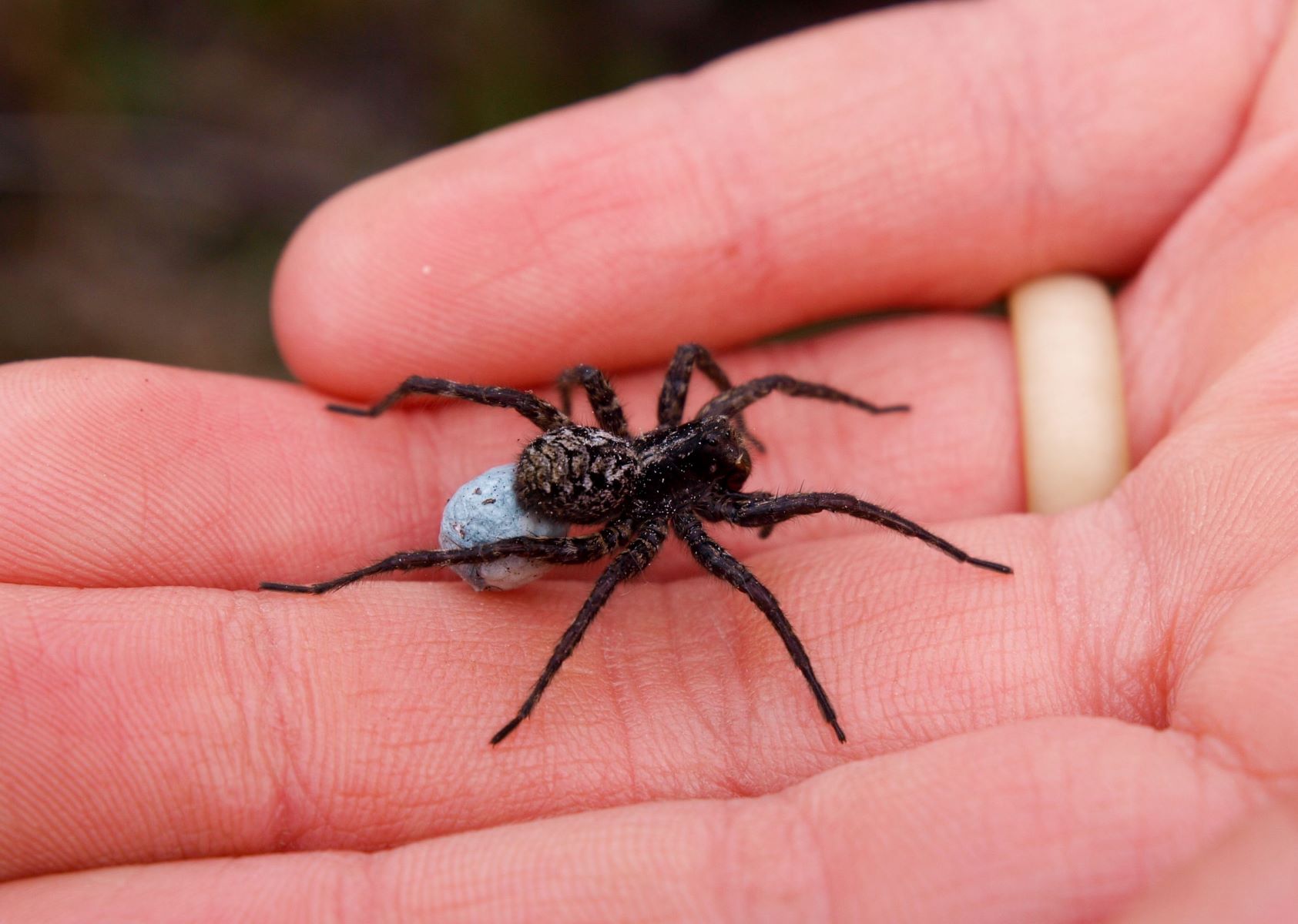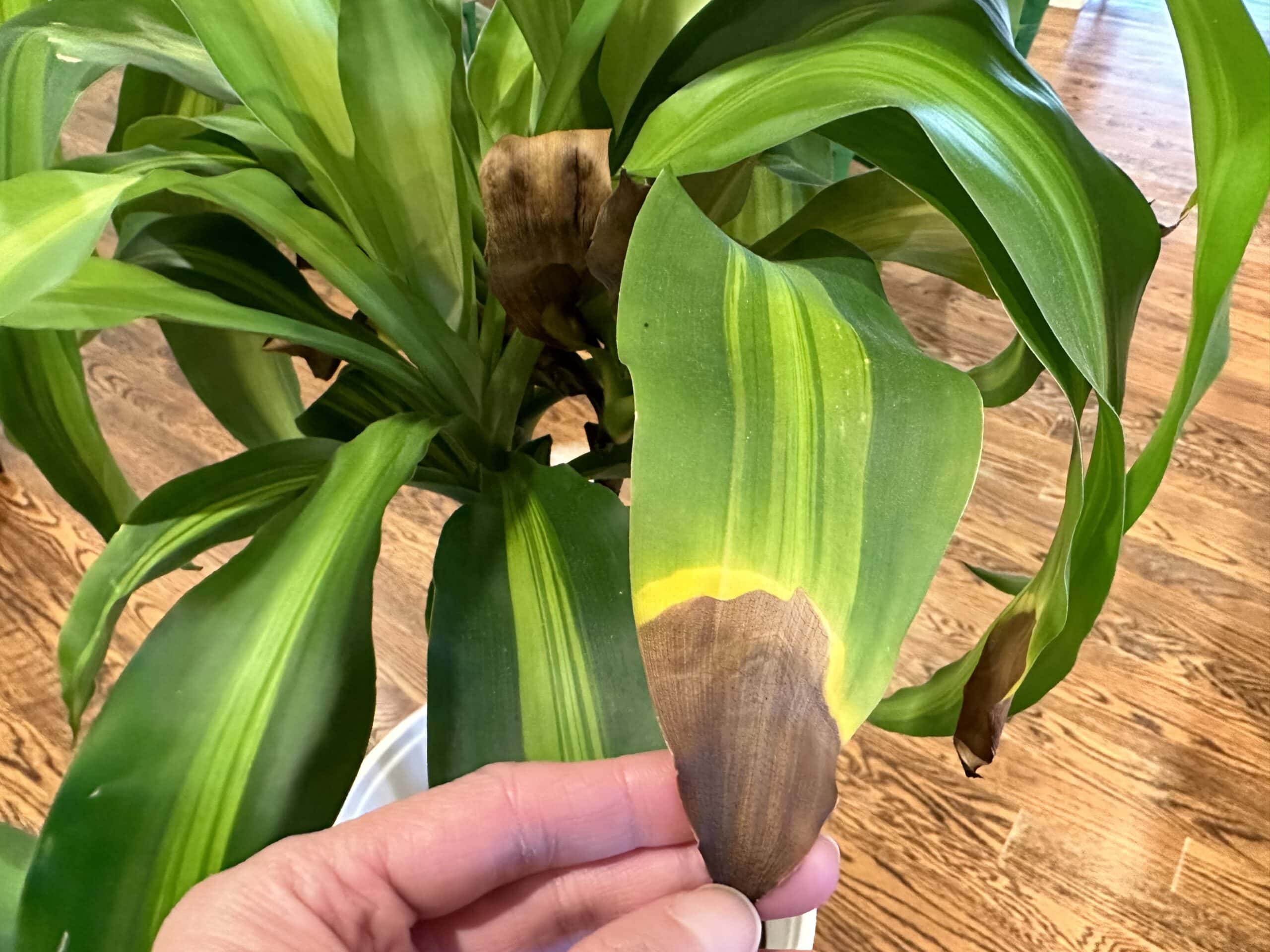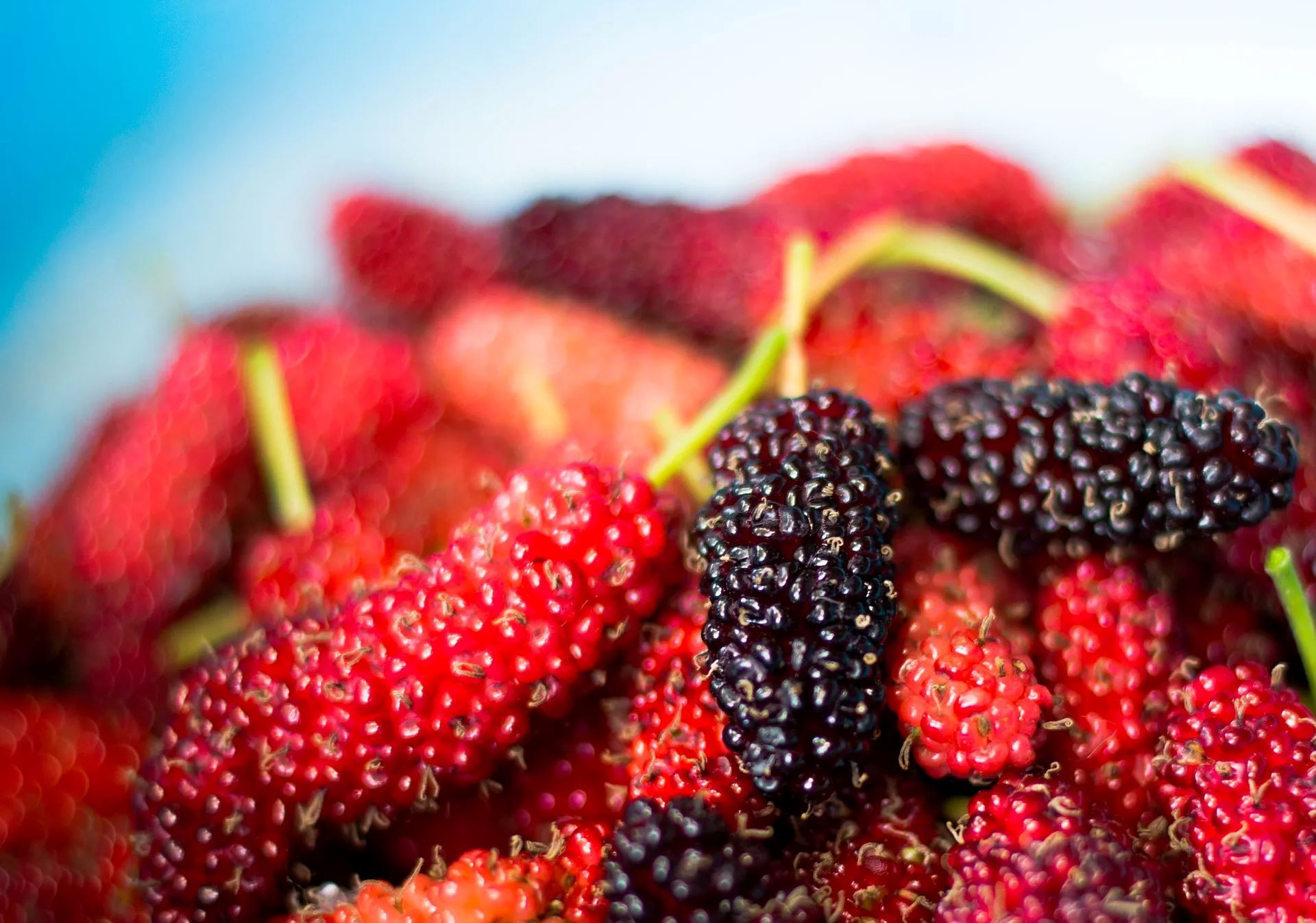Home>Home and Garden>The Surprising Reason You Should Remove Rose Leaves With Black Spots


Home and Garden
The Surprising Reason You Should Remove Rose Leaves With Black Spots
Published: January 15, 2024
Discover the benefits of removing rose leaves with black spots for a healthier home and garden. Learn why this simple step can make a surprising difference.
(Many of the links in this article redirect to a specific reviewed product. Your purchase of these products through affiliate links helps to generate commission for Regretless.com, at no extra cost. Learn more)
Table of Contents
Introduction
Rose gardening is a beloved pastime for many enthusiasts, offering a plethora of colorful blooms and delightful fragrances. However, amidst the beauty of your rose bushes, you may notice the unwelcome presence of black spots marring the leaves. While this may seem like a minor aesthetic issue, the truth is that these black spots can have a significant impact on the health and vitality of your roses. In this article, we will delve into the surprising reason why it is crucial to remove rose leaves with black spots, and how this simple practice can make a world of difference in maintaining the health and beauty of your cherished roses.
The presence of black spots on rose leaves is often an indication of a fungal disease known as black spot disease, which can wreak havoc on the overall well-being of your roses. Many gardeners may underestimate the severity of this issue, dismissing it as a mere cosmetic concern. However, the implications of allowing black spot disease to persist can be far-reaching, potentially leading to diminished floral displays, weakened plant vigor, and even the eventual demise of the affected roses.
By understanding the importance of addressing black spot disease, you can take proactive measures to safeguard the health and longevity of your roses. In the following sections, we will explore the detrimental effects of black spots on rose health, as well as effective strategies for preventing the spread of this insidious disease. Additionally, we will provide practical guidance on the best practices for removing affected leaves, empowering you to nurture your roses back to optimal health and vibrancy.
As we embark on this insightful journey, you will gain valuable insights into the pivotal role of removing rose leaves with black spots, ultimately enhancing your ability to cultivate thriving, disease-free roses that will be the envy of your garden. Let's delve into the fascinating world of rose care and discover the transformative impact of this seemingly simple yet crucial practice.
The Importance of Removing Rose Leaves with Black Spots
The presence of black spots on rose leaves is not merely a superficial blemish; it is a glaring indicator of a potentially devastating fungal disease known as black spot disease. This seemingly innocuous affliction can rapidly escalate, posing a serious threat to the overall health and vitality of your cherished roses. As a conscientious gardener, it is imperative to recognize the pivotal role of removing rose leaves with black spots, as this seemingly simple act can yield profound benefits for the well-being of your roses.
Black spot disease, caused by the fungus Diplocarpon rosae, manifests as conspicuous black or dark brown spots on the upper surface of rose leaves. Left unchecked, these unsightly blemishes can rapidly multiply, eventually leading to premature defoliation and compromising the photosynthetic capacity of the affected plants. Consequently, the ability of the roses to produce energy and vital nutrients becomes severely impaired, resulting in diminished floral displays and stunted growth.
By diligently removing leaves exhibiting black spots, you effectively mitigate the spread of the fungal pathogen, thereby safeguarding the overall health and vigor of your roses. This proactive measure not only curtails the progression of the disease within individual plants but also prevents its dissemination to neighboring roses, effectively containing the outbreak and averting widespread devastation.
Moreover, the act of removing affected leaves serves to enhance the aesthetic appeal of your rose bushes, restoring their visual splendor and preserving the integrity of the foliage. This, in turn, contributes to the overall allure of your garden, creating an enchanting landscape that beckons admiration and appreciation from all who behold it.
Furthermore, by promptly addressing the presence of black spot disease, you demonstrate a steadfast commitment to the well-being of your roses, nurturing them with the care and attention they deserve. This conscientious approach not only fosters a harmonious and thriving garden environment but also cultivates a deep sense of fulfillment and satisfaction as you witness the resilience and rejuvenation of your once-ailing roses.
In essence, the importance of removing rose leaves with black spots transcends mere cosmetic considerations; it embodies a profound dedication to the health, vitality, and enduring beauty of your cherished roses. This simple yet impactful practice empowers you to proactively combat the insidious threat of black spot disease, ensuring that your garden flourishes with resplendent roses that exude vibrancy and grace.
How Black Spots Affect Rose Health
The insidious presence of black spots on rose leaves heralds the onset of a formidable adversary to the health and vitality of your cherished roses. Black spot disease, caused by the fungal pathogen Diplocarpon rosae, exerts a profound and multifaceted impact on the overall well-being of rose plants, permeating every aspect of their physiological functioning.
First and foremost, the emergence of black spots on rose leaves signifies a compromised photosynthetic capacity, a fundamental process essential for the production of energy and vital nutrients. As the fungal disease progresses, the black or dark brown spots proliferate, encroaching upon a significant portion of the leaf surface. This encroachment impedes the leaves' ability to harness sunlight and convert it into essential energy through photosynthesis, thereby disrupting the plant's metabolic processes and compromising its vigor.
Furthermore, the debilitating effects of black spot disease extend beyond mere aesthetic degradation, encompassing a tangible diminishment in the plant's ability to withstand environmental stressors and combat opportunistic pathogens. The compromised foliage becomes increasingly susceptible to additional infections, further exacerbating the plant's deteriorating condition and impeding its capacity to mount a robust defense against adversities.
Moreover, the presence of black spots precipitates premature defoliation, as the affected leaves succumb to the relentless onslaught of the fungal pathogen. This premature shedding of foliage not only detracts from the visual appeal of the rose bushes but also deprives the plants of their primary means of synthesizing nutrients and facilitating essential physiological processes.
Additionally, the cumulative impact of black spot disease culminates in a palpable reduction in the overall vigor and resilience of the affected roses. As the disease exacts its toll on the plants, their growth becomes stunted, their floral displays diminish, and their once-lustrous foliage succumbs to a pallid and lackluster appearance.
In essence, the detrimental effects of black spots on rose health are far-reaching, encompassing compromised photosynthetic capacity, heightened susceptibility to additional infections, premature defoliation, and diminished vigor. By comprehensively understanding the multifaceted impact of black spot disease on rose plants, you can appreciate the imperative nature of removing affected leaves and implementing robust preventive measures to safeguard the health and vitality of your treasured roses.
Preventing the Spread of Disease
Preventing the spread of black spot disease within your rose garden is paramount to preserving the health and vitality of your cherished roses. Implementing robust preventive measures not only curtails the progression of the fungal pathogen but also fortifies the resilience of your rose bushes, creating an environment conducive to their flourishing.
-
Optimal Cultural Practices: Cultivating a healthy and robust garden environment is pivotal in preventing the proliferation of black spot disease. Ensure that your roses are situated in well-drained locations with adequate air circulation, as damp and stagnant conditions can exacerbate the spread of fungal pathogens. Additionally, maintain a diligent regimen of watering at the base of the plants to minimize moisture accumulation on the foliage, thereby mitigating the conducive conditions for fungal growth.
-
Prudent Plant Spacing: Strategically spacing your rose bushes is instrumental in impeding the spread of black spot disease. Adequate spacing facilitates enhanced air circulation around the plants, reducing humidity levels and inhibiting the proliferation of fungal pathogens. This prudent practice serves as a formidable barrier against the insidious encroachment of black spot disease, fortifying the collective resilience of your rose garden.
-
Thorough Sanitation: Regularly remove fallen leaves and debris from the vicinity of your rose bushes to prevent the accumulation of fungal spores and mitigate the risk of reinfection. Additionally, promptly discard pruned foliage and spent blooms to preemptively eradicate potential sources of fungal proliferation, thereby fostering a hygienic and disease-resistant garden environment.
-
Selective Pruning: Adopt a discerning approach to pruning, removing any diseased or compromised foliage with precision and care. By promptly excising affected leaves and stems, you effectively arrest the spread of black spot disease, preventing its insidious infiltration into healthy plant tissues. Furthermore, ensure that your pruning tools are meticulously sanitized between each use to prevent the inadvertent transmission of fungal spores.
-
Fungal Control Measures: Consider employing organic or synthetic fungicides as a supplementary measure to combat black spot disease, particularly during periods of heightened susceptibility. Select a fungicidal product specifically formulated for controlling black spot disease and adhere to the prescribed application regimen to effectively mitigate the progression of the fungal pathogen.
By diligently implementing these preventive measures, you fortify the defenses of your rose garden against the pernicious encroachment of black spot disease, creating an environment conducive to the sustained health and vitality of your treasured roses. Through proactive and vigilant stewardship, you cultivate a garden resplendent with flourishing roses, free from the scourge of black spot disease.
Best Practices for Removing Affected Leaves
When it comes to safeguarding the health and vitality of your roses, the meticulous and judicious removal of affected leaves plays a pivotal role in mitigating the spread of black spot disease. By adhering to best practices for removing these compromised leaves, you can effectively curtail the progression of the fungal pathogen and bolster the resilience of your cherished roses. Here are the essential best practices to guide you in this crucial endeavor:
-
Timely Intervention: Upon noticing the telltale signs of black spot disease, promptly identify and isolate the affected leaves for removal. Timely intervention is paramount in preventing the dissemination of the fungal pathogen, thereby safeguarding the overall health of your rose plants.
-
Precision and Care: Employ precision and care when removing affected leaves to minimize the inadvertent spread of fungal spores. Utilize sharp, sanitized pruning shears to delicately excise the compromised foliage, ensuring clean cuts to expedite the healing process and mitigate the risk of secondary infections.
-
Selective Pruning: Adopt a discerning approach to pruning, targeting leaves exhibiting prominent black spots or extensive fungal lesions. By selectively removing the most severely affected foliage, you effectively arrest the progression of the disease and preserve the integrity of the remaining healthy leaves.
-
Thorough Disposal: Upon removing the affected leaves, meticulously collect and dispose of them in a sealed bag to prevent the dispersal of fungal spores. Promptly discard the pruned foliage in a designated waste receptacle, ensuring its complete removal from the vicinity of your rose bushes.
-
Sanitization Protocol: After completing the removal of affected leaves, diligently sanitize your pruning tools with a solution of 70% isopropyl alcohol or a commercial disinfectant. Thoroughly clean the blades of the pruning shears to eradicate any residual fungal spores, thereby averting the inadvertent transmission of the pathogen during subsequent pruning activities.
-
Observational Vigilance: Maintain a vigilant stance in monitoring the resurgence of black spot disease, regularly inspecting the foliage of your roses for any signs of new fungal lesions. By promptly identifying and addressing any recurrent instances of black spot disease, you effectively preempt its resurgence and preserve the health of your rose plants.
By adhering to these best practices for removing affected leaves, you assume an active and conscientious role in safeguarding the well-being of your cherished roses. This meticulous and proactive approach not only curtails the spread of black spot disease but also fosters an environment conducive to the sustained health, vitality, and resplendence of your treasured rose garden.
Conclusion
In the realm of rose gardening, the vitality and allure of your cherished roses are intrinsically intertwined with the proactive measures you undertake to combat the insidious threat of black spot disease. As we conclude this enlightening exploration, it is abundantly clear that the seemingly simple act of removing rose leaves with black spots holds profound significance in preserving the health, vigor, and enduring beauty of your treasured roses.
By steadfastly adhering to the best practices for removing affected leaves and implementing robust preventive measures, you fortify the defenses of your rose garden against the pernicious encroachment of black spot disease, creating an environment conducive to the sustained flourishing of your roses. The meticulous and judicious removal of affected leaves, coupled with an unwavering commitment to optimal cultural practices and vigilant observational vigilance, empowers you to nurture a garden resplendent with thriving roses, free from the scourge of black spot disease.
As you embark on your journey as a conscientious steward of your rose garden, remember that your unwavering dedication to the well-being of your roses is a testament to the profound bond between a gardener and their beloved plants. Each act of removing affected leaves is a testament to your commitment to fostering a flourishing and disease-resistant garden environment, where your roses can thrive and flourish with resplendent vitality.
In essence, the removal of rose leaves with black spots transcends mere horticultural practice; it embodies a profound reverence for the resilience and enduring beauty of your cherished roses. Through your unwavering diligence and nurturing care, you perpetuate a legacy of vibrant roses that stand as a testament to the transformative impact of your steadfast stewardship.
May your rose garden bloom with resplendent vitality, unfettered by the specter of black spot disease, and may the enduring beauty of your cherished roses inspire admiration and awe for generations to come. As you continue your journey as a devoted guardian of your garden, may the timeless allure of your flourishing roses serve as a testament to the enduring legacy of your unwavering dedication and nurturing stewardship.














